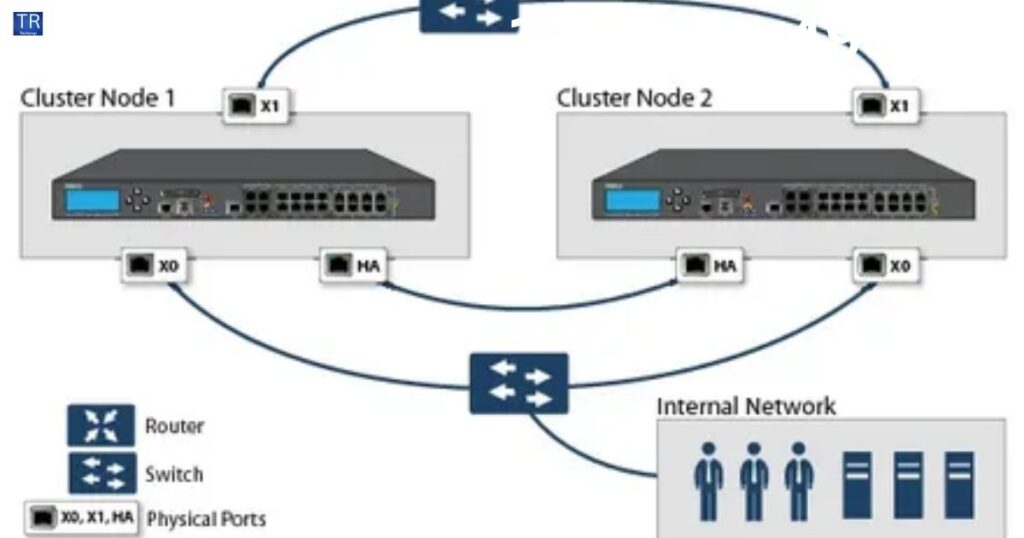Localhost, represented by the IP address 127.0.0.1.It is a crucial concept in networking.It allows your computer to communicate with itself.Which makes it perfect for testing and debugging applications without needing an external network.
Port 49342 is a specific port number that developers can use for custom applications and services.In this guide, we wi’ll explore the importance of 127.0.0.1:49342, how to set it up, troubleshoot common issues, and follow best practices for managing local servers effectively.
What is Localhost and Why is it Important?
It refers to your own computer.It is represented by the IP address 127.0.0.1.This address allows software to communicate with itself.Developers use localhost for testing and debugging applications.
Localhost provides a safe space for testing.Developers can try new features without affecting live servers.It speeds up the development process.Localhost also reduces exposure to external threats.This enhances security during development.
Read Also: Iamnobody89757: Decoding The Intriguing Username
Understanding IP Address 127.0.0.1
The IP address 127.0.0.1 is known as the loopback address.It allows a computer to communicate with itself. This means you can test network applications without needing an external connection. It is a standard address used across all operating systems.
When you use 127.0.0.1, you are essentially sending data back to your own device.This is useful for developers who need to debug or test their applications.By using this address, they can ensure everything works correctly before going live.It creates a safe environment for testing without any outside interference.
Read Also: How to solve errordomain=nscocoaerrordomain&errormessage=could not find the specified shortcut.&errorcode=4 ?
The Role of Ports in Networking
Ports play a vital role in networking.They act as entry points for data to flow in and out of a computer.Each port has a unique number that identifies it.This number helps direct traffic to specific applications or services.

For example, port 80 is used for web traffic, while port 443 is for secure connections.By using different ports, multiple services can run on the same device without interfering with each other. Understanding ports is essential for managing network connections effectively.They help ensure that data reaches the right destination quickly and efficiently.
Read Also: Exploring The Potential Of www.goodmooddotcom.com
Port 49342: Specific Use and Configuration
| Aspect | Details |
| Port Number | 49342 |
| Type | Dynamic port |
| Common Uses | Custom applications, testing, and development |
| Configuration | Requires server settings to listen and respond on port 49342 |
| Benefits | Isolates services for better managementAvoids conflicts with well-known ports |
| Setup Steps | Install server software (e.g., Apache, Nginx)Modify configuration filesRestart serverTest using 127.0.0.1:49342 |
| Troubleshooting Tips | Check for port conflictsEnsure firewall settings allow trafficReview server logs for errors |
| Security Considerations | Limits access to local machine, reducing exposure to external threats |
How to Configure Localhost and Ports
To set up localhost and ports, you need to modify server configuration files.First, install server software like Apache, Nginx, or IS.This software allows your machine to serve local web content.
Next, open the configuration options of your chosen server.Set it to listen on port 49342.This usually involves editing a configuration file to specify the port number. Make sure the server has the necessary permissions to read and write to the directories where your web content is stored.
After making changes, restart the server to apply the new settings.Finally, test the setup by opening a web browser and navigating to http://127.0.0.1:49342.
Common Issues with Localhost and Port Configuration
- Port Conflicts: If multiple apps try to use the same port, it can cause conflicts and prevent services from working.
- Firewall Restrictions: Firewalls may block certain ports, stopping access to services running on localhost.
- Incorrect Server Settings: Wrongly configured server settings can lead to improperly set up services and connectivity problems.
Troubleshooting Tips:
- Use tools like netstat or lsof to check if the server is running and using the right port
- Look at server logs for any error messages or warnings about configuration issues
- Make sure the firewall allows traffic on 127.0.0.1:49342 and no other app is using the same port
- Double-check the server configuration files for any mistakes
- Try restarting the server to resolve issues
Troubleshooting Localhost and Port 127.0.0.1:49342
Sometimes, issues may arise when working with localhost and port 49342. The most common problems are port conflicts, firewall restrictions, and incorrect server settings.If you encounter any problems, start by checking the server status using tools like netstat or lsof.This will confirm if the server is running and using the correct port.

Next, review the server logs for any error messages or warnings that may indicate configuration problems.Finally, ensure that your firewall is allowing traffic on 127.0.0.1:49342 and that no other application is using the same port.
Security Implications of Using Localhost
If you encounter issues with localhost and port 127.0.0.1:49342, there are several steps you can take to troubleshoot the problem.First, use tools like netstat or lsof to check the server status and confirm that the service is running on the correct port.
Next, review the server logs for any error messages or warnings that may indicate configuration problems.Check your firewall settings to ensure that traffic is allowed on port 49342 and that no other application is using the same port.Finally, verify your configuration files and restart the server to apply any changes you’ve made.
Best Practices for Managing Local Servers
Following best practices is key for efficient and secure local server management.Perform regular maintenance checks.Apply necessary updates promptly.Keep clear documentation of server settings.
Have backup procedures in place.Use virtualization tools like Docker or VirtualBox.They help isolate services, simplifying management.Monitor server performance closely.Use monitoring tools to track resource usage.Following these practices ensures your local servers run smoothly and securely.
Key Takeaways
- Localhost is essential for testing and development.
- IP address 127.0.0.1 allows your computer to communicate with itself.
- Port 49342 is ideal for custom applications.
- Understanding port configuration helps prevent conflicts.
- Regular maintenance ensures server performance and security.
- Use virtualization tools to simplify management.
- Monitor server performance for optimal operation.
FAQ’s
How do I connect to 127.0. 0.1 localhost?
To connect to localhost at 127.0.0.1, simply open a web browser and enter http://127.0.0.1 or http://localhost in the address bar.
What is IP 127.0. 0.1 used for?
IP address 127.0.0.1 is used as the loopback address, allowing a computer to communicate with itself for testing and development purposes.
How to open localhost 8080 port?
To open localhost on port 8080, type http://127.0.0.1:8080 in your web browser’s address bar.
What is the IP address of localhost and port?
The IP address of localhost is 127.0.0.1, and the specific port mentioned in the guide is 49342, resulting in the address 127.0.0.1:49342.
Final Thought
Understanding localhost and port 49342 is crucial for effective local server management.This knowledge helps developers test and debug applications safely.Have you considered how localhost can improve your workflow? By following best practices, you can ensure your local servers run smoothly and securely. Embrace the power of 127.0.0.1:49342 to enhance your development process.

Charlene J. Newton is an executed writer recognized for her captivating fiction and non-fiction works. With a keen eye for detail and an expertise for crafting attractive narratives, Newton’s writing has garnered crucial acclaim. Her diverse portfolio covers a variety of genres, from concept-provoking literary fiction to insightful non-public essays











